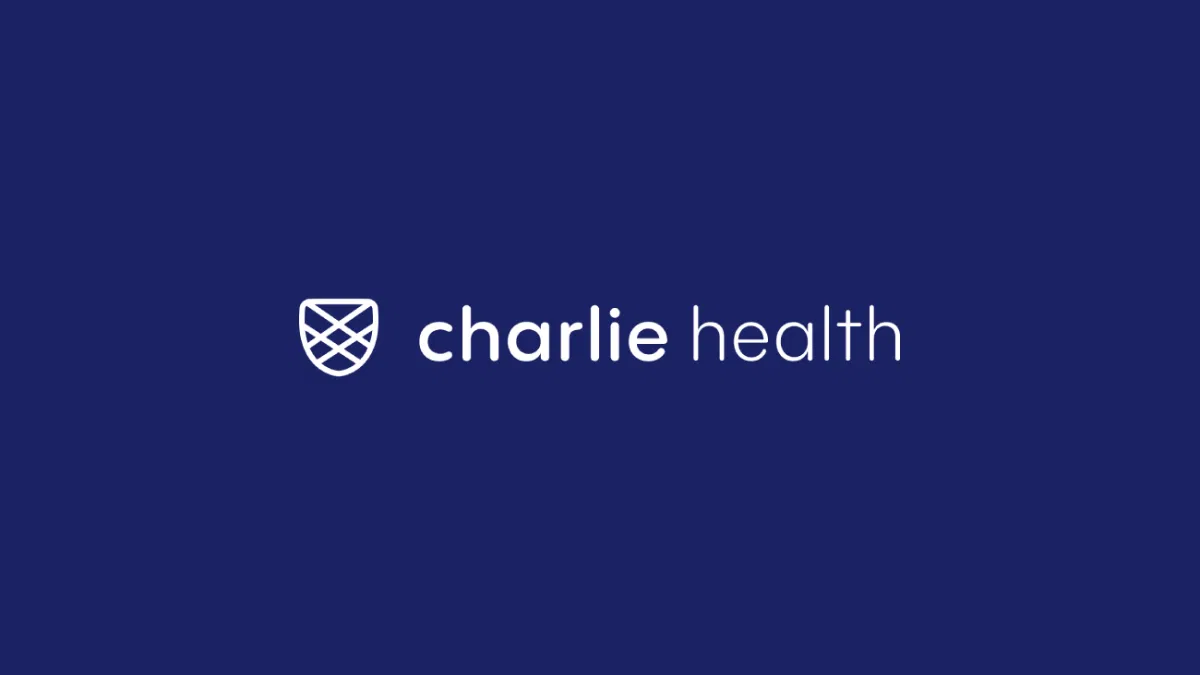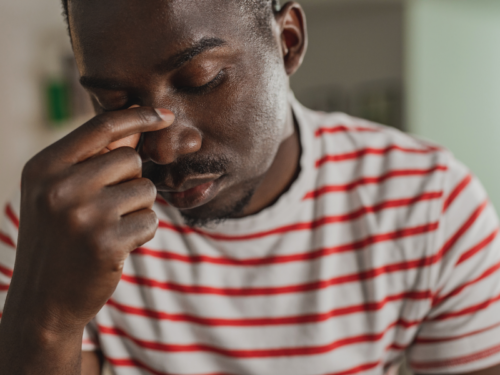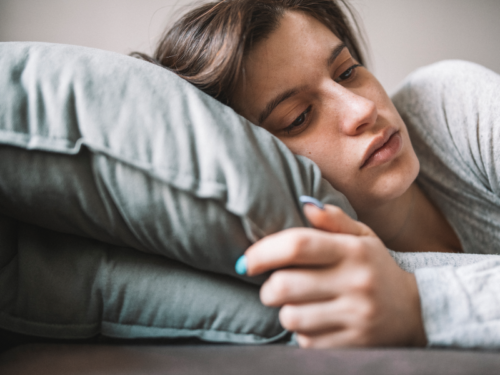
Table of Contents
Cyclothymia (Cyclothymic Disorder): Symptoms, Causes & Treatment

Written By: Sarah duRivage-Jacobs

Clinically Reviewed By: Dr. Don Gasparini
June 12, 2023
7 min.
Around 20-50% of people seeking mental health treatment for conditions like mood and anxiety may be impacted by cyclothymia. Here’s what to know about cyclothymic disorder and how to get help.
Learn more about our Clinical Review Process
Table of Contents
Many people may have heard of bipolar disorder, but fewer may know that bipolar is a spectrum of mental health disorders. Cyclothymia, or cyclothymic disorder, which is considered a “milder” form of other bipolar disorders, falls into this spectrum.
Cyclothymia, though not well known, is pretty common: Research suggests that approximately 20-50% of people who seek treatment for mood, anxiety, impulsive, or addictive disorders may be impacted by cyclothymia.
Despite how prevalent cyclothymia is, some experts have questioned when and how it’s diagnosed—and whether it should be a subtype of bipolar disorder instead of its own condition. As a result, cyclothymia may also be rarely clinically diagnosed.
What is cyclothymia?
Cyclothymia is a mood disorder and a subtype of bipolar disorder. Mood disorders, also referred to as affective disorders, are mental health conditions marked by mood highs and lows. People with cyclothymia experience mood cycling (rapid mood swings), frequent and very heightened emotions, and the inability to regulate those emotions.
Cyclothymic disorder symptoms are similar to bipolar disorders, but they’re typically less severe and less disruptive to daily life. If someone who’s been diagnosed with cyclothymic disorder has a major depressive episode or hypomanic episode, they will be rediagnosed with bipolar I or bipolar II. While disruption to life may be less dramatic, people may find that functioning with unpredictable cyclothymia symptoms is challenging to do well.
Controversy and confusion in cyclothymic disorder
Even though cyclothymic disorder was first introduced in the Diagnostic and Statistical Manual of Mental Disorders (DSM) in 1980, there’s been a significant lack of research to evolve the collective understanding of the condition. Despite its prevalence, cyclothymic disorder is not a common diagnosis, perhaps due to unclear diagnostic criteria and overlapping symptoms with other mood disorders.
Some experts believe that instead of considering cyclothymia a subtype of bipolar disorder—or a milder form, as the American Psychiatric Association writes—the condition should be its own standalone diagnosis. By not separating cyclothymia from bipolar disorder, the condition may be misdiagnosed and mistreated.
Other researchers argue that cyclothymia should be reclassified as an aspect of neurodevelopmental disorders, like attention deficit hyperactivity disorder (ADHD), autistic spectrum disorders, Tourette’s syndrome, or intellectual disabilities.
What are the signs and symptoms of cyclothymia?
Cyclothymia is marked by the consistent alternation of low-grade emotional highs (hypomanic symptoms) and lows (depressive symptoms).
Hypomanic symptoms of cyclothymia include:
- Euphoria (extreme happiness and excitement)
- Extreme optimism
- Inflated self-esteem
- More talking than usual
- Poor judgment and risk-taking behaviors
- Racing thoughts
- Irritability or agitation
- Excessive physical activity
- Increased drive
- Decreased need for sleep
- Easily distracted and unable to focus
Depressive symptoms of cyclothymia include:
- Feelings of sadness, hopelessness, emptiness, worthlessness, or guilt
- Tearfulness
- Irritability (especially among young people) and restlessness
- Lost interest in favorite activities
- Weight changes
- Sleep problems
- Fatigue or feeling slowed down
- Concentration problems
- Thoughts of death or suicide
What are the risk factors for cyclothymia?
Bipolar spectrum disorders, including cyclothymic disorder, likely have biological and environmental risk factors.
Biological risk factors for cyclothymic disorder may include genetic predisposition. One study on cyclothymia among identical twins shows that 57% of the pairs were both diagnosed with the disorder. Another biological risk factor may be neurotransmitter dysregulation—impairment in the chemical messages sent between the body, the brain, and other cells.
On the environmental side, negative life experiences make mood instability and dysregulation more likely. It is common for cyclothymic disorder, which is characterized by chronic mood fluctuations, to co-occur with other conditions like anxiety disorders, substance use, and ADHD.
How is cyclothymia diagnosed?
Clinical diagnosis by a mental health provider can help people understand if they have cyclothymia, bipolar I disorder or bipolar II disorder, depression, or a related psychiatric disorder. Diagnosis may incorporate a physical exam (in case a medication condition could be impacting mental health), psychological evaluation, and keeping a daily record of moods, sleep patterns, and other symptoms.
According to the DSM-5, cyclothymia is diagnosed when someone has the following:
- Periods of hypomanic and depressive symptoms for at least one year among young people and at least two years among adults. The symptoms must have occurred for at least half of that time.
- Periods of a more stable mood for less than two months at a time.
- Symptoms that significantly impact a person’s social, school, or work life, or other important areas of life.
- Symptoms that don’t meet the diagnostic criteria for bipolar I or II, major depressive disorder, or another mental disorder.
- Symptoms that aren’t the result of substance use or a medical issue.
What are the treatments for cyclothymia?
The most up-to-date research suggests that treating children and adolescents for bipolar spectrum disorders—including cyclothymia—requires medication, family-focused psychoeducation, cognitive behavioral therapy (CBT), skill-building, and other psychosocial support as needed.
Medication
While no medication is approved by the Food and Drug Administration specifically for treating cyclothymia, mood stabilizers like valproate, lamotrigine, and lithium are often prescribed as first-line treatment. The antipsychotic medication quetiapine has also been explored for treating disorders like cyclothymia and may be an effective option. Antidepressants may not be a helpful treatment for bipolar spectrum disorders and can instead worsen symptoms.
Cognitive behavioral therapies
Cognitive behavioral therapies are built on the principle that psychological issues are partially caused by unhelpful thought and behavior patterns—and that people can learn how to better manage and cope with these issues.
The cognitive behavioral therapies demonstrated as effective for treating cyclothymia include family-focused treatment for adolescents, child- and family-focused cognitive behavioral therapy, and psychoeducational psychotherapy.
In these therapies, psychoeducation, family involvement, and skill-building are all part of the process:
- Psychoeducation and family involvement: Supporting a healthier and happier home environment is essential for positive treatment outcomes. When families are involved in care, outcomes improve. Family relationships may be especially challenging for young people with bipolar spectrum disorders. Offering families and young people psychoeducation on symptom management and strategies for stress and coping ensures that everyone’s on the same page.
- Skill-building: An additional critical element of therapeutic treatment for young people with bipolar spectrum disorders is building new skills related to constructive communication and effective problem-solving. The goal of skill-building in this context is to improve mood and psychosocial functioning within and beyond the family.
Family-focused treatment for adolescents
Family-focused treatment for adolescents (FFT-A) is an adapted version of a cognitive behavioral therapeutic modality known for its efficacy among adults with bipolar disorders. The goals of FFT-A are to:
- Help family members understand the disorder
- Reduce family members’ criticism, hostility, and emotional overinvolvement
- Offer psychoeducation on managing symptoms, coping with stress, tracking moods, and preventing high-risk situations.
FFT-A can provide parents with the knowledge and resources to more effectively advocate for their loved ones with bipolar spectrum disorders.
Child- and family-focused cognitive behavioral therapy (CFF-CBT)
Child- and family-focused cognitive behavioral therapy (CFF-CBT) is a similar therapeutic modality to FFT-A designed for younger children diagnosed with bipolar disorders. In CFF-CBT, the child and their family have sessions dedicated to regulating moods, restructuring thoughts, building family support, and developing social skills and healthier habits.
Psychoeducational psychotherapy
Psychoeducational psychotherapy (PEP) is another therapeutic modality used in bipolar disorder treatment that’s been adapted for young people. PEP focuses specifically on the psychosocial factors that contribute to mood disorders, such as family and relationship conflict, through family-based psychoeducation and cognitive behavioral therapy.
In PEP, psychoeducation centers on managing mood symptoms, identifying and monitoring mood, regulating emotions, learning coping skills, restructuring thoughts, communicating more effectively, solving problems, and improving social skills.
Join the Charlie Health Library
Get mental health updates, research, insights, and resources directly to your inbox.
You can unsubscribe anytime.
Treating cyclothymia and bipolar disorders at Charlie Health
Charlie Health’s Intensive Outpatient Program (IOP) is a virtual care option for teens and young adults who would benefit from a higher level of support than weekly psychotherapy sessions. Unlike most intensive programs, care is scheduled around life, school, and work activities so no young person has to hit pause before getting help.
Our expansive and experienced team of mental health providers can help teens and young adults manage various challenging mental health conditions, including cyclothymic disorder and other disorders on the bipolar spectrum. Each individual’s IOP is personalized for their needs. Through weekly individualized therapy, supported groups with peers, and family therapy, our providers bring in therapeutic modalities like cognitive behavioral therapy and incorporate additional techniques when helpful.
Charlie Health aims to make evidence-based mental healthcare accessible for all young people who need it. To that end, we work with major commercial insurance plans and Medicaid where accepted.
If you or your loved one may be dealing with cyclothymia or another bipolar spectrum disorder, reach out today to see if Charlie Health is the right program. Our Admissions team is here for you 24/7 to answer any questions you may have.





